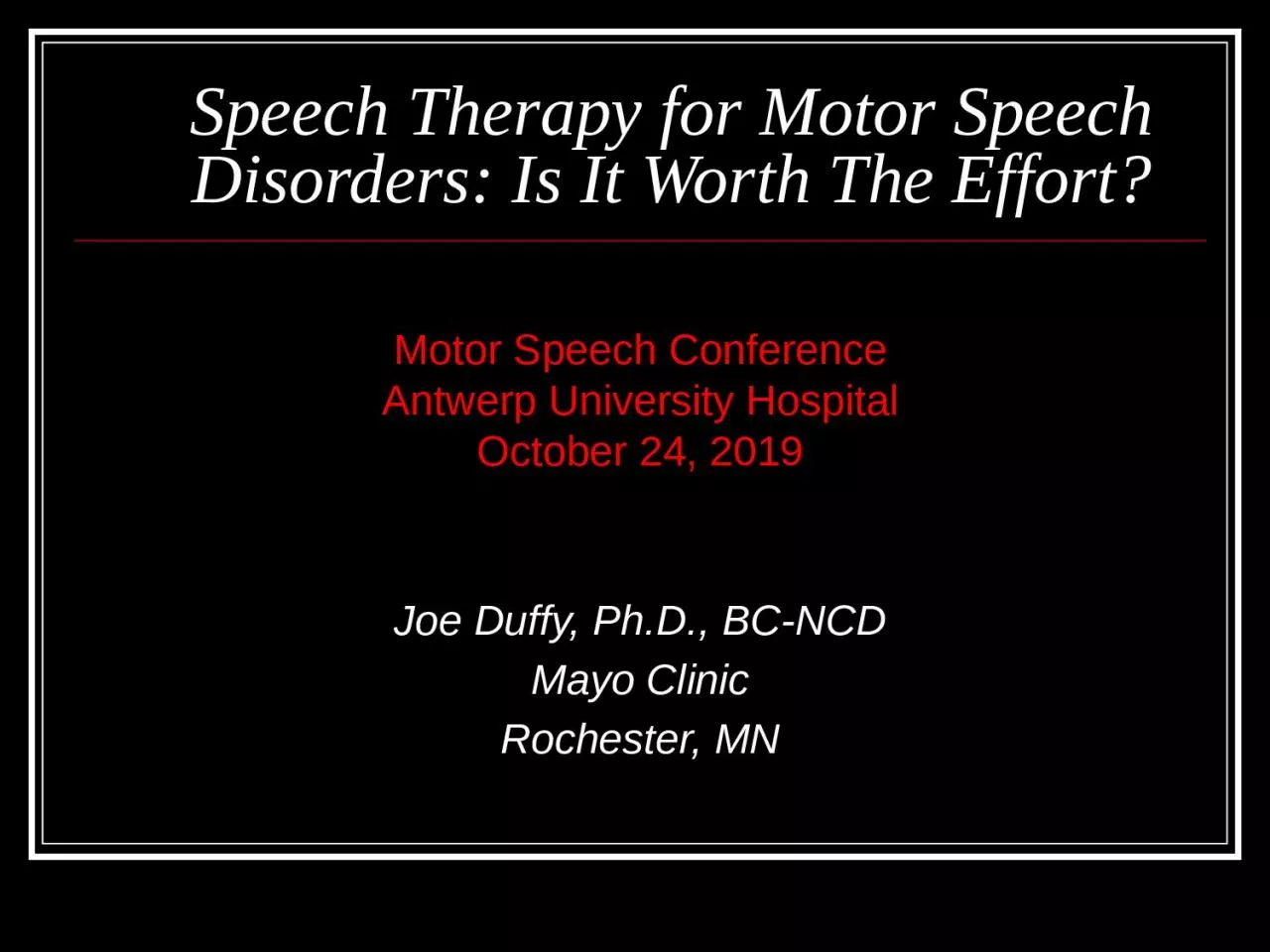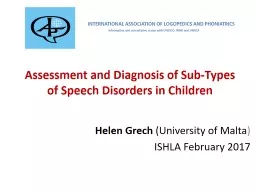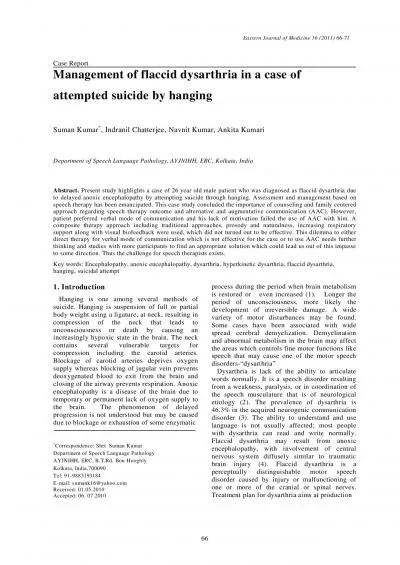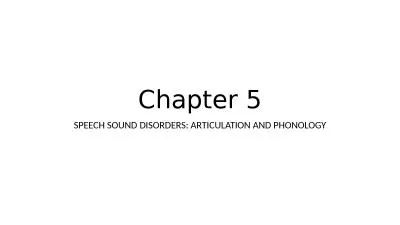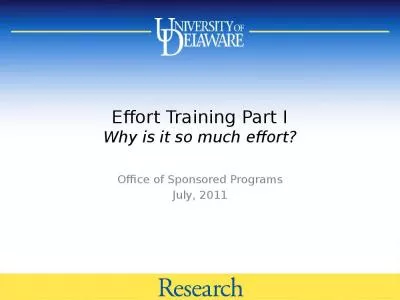PPT-Speech Therapy for Motor Speech Disorders: Is It Worth The Effort?
Author : bety | Published Date : 2022-06-11
Motor Speech Conference Antwerp University Hospital October 24 2019 Joe Duffy PhD BCNCD Mayo Clinic Rochester MN Speech Therapy for Motor Speech Disorders Is
Presentation Embed Code
Download Presentation
Download Presentation The PPT/PDF document "Speech Therapy for Motor Speech Disorder..." is the property of its rightful owner. Permission is granted to download and print the materials on this website for personal, non-commercial use only, and to display it on your personal computer provided you do not modify the materials and that you retain all copyright notices contained in the materials. By downloading content from our website, you accept the terms of this agreement.
Speech Therapy for Motor Speech Disorders: Is It Worth The Effort?: Transcript
Download Rules Of Document
"Speech Therapy for Motor Speech Disorders: Is It Worth The Effort?"The content belongs to its owner. You may download and print it for personal use, without modification, and keep all copyright notices. By downloading, you agree to these terms.
Related Documents

